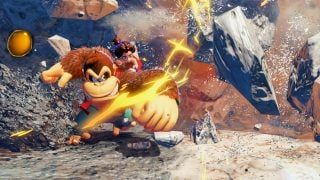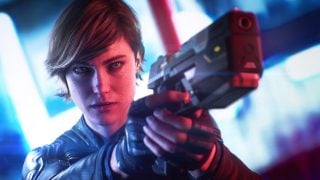When it comes to fighting games on Switch, we are, thankfully, never short on options. From gems like BlazBlue: Cross Tag Battle and Street Fighter 30th Anniversary Collection, to indie games like Pocket Rumble and Fantasy Strike, the Switch has been slowly building up a truly impressive library.
I’ve played most of the fighters available on Nintendo’s popular console, so I say with some level of authority that Under Night In-Birth Exe:Late[cl-r] might be the best traditional fighting game on the system.
C-C-C-COMBO MAKER!!!
Under Night In-Birth Late[cl-r] has one of the wildest names I’ve seen for a game — which I will abbreviate to UNICLR for my own sanity — but it also has one of the most immediately enjoyable fighting systems going.
The game plays like your average anime fighting game. Think Guilty Gear, BlazBlue, and Persona 4 Arena. Like those games, it has air dashes, multiple meters, and a simple control scheme that hides a mind-blowingly involved combo system. The cast of characters is quite large, with just about every fighting game archetype accounted for, from grapplers to zoners and even puppet characters, similar to Carl from BlazBlue. I fell in love with UNICLR’s Merkava, the weirdo of the cast with a penchant for screaming and swinging his big noodle arms.
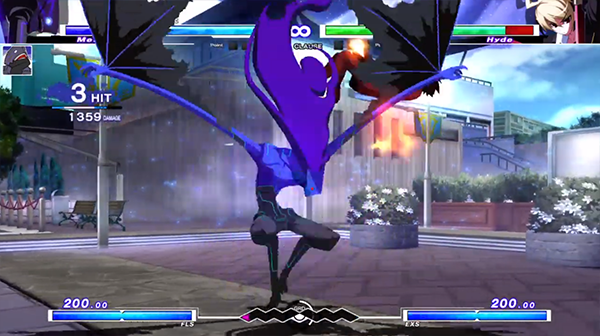
The main differentiator with UNICLR is the GRD system. In addition to the health bars and super meters, there is a symmetrical meter at the bottom with squares and a circle in the middle. When you attack or move forward, your squares fill up. When you take damage or retreat, you lose squares. Every seventeen seconds, the circle fills up, and whoever has more squares enters Vorpal state for the next cycle. Vorpal increases your raw damage, gives access to new moves, and allows you to perform a Chain Shift, which is a cancel that can extend your combos or give you a chance to react to your opponent’s offense while gaining meter. Several other aspects come into play, including a button that lets you fill GRD manually and a shield that, when used to block correctly, gains a large amount of GRD. This means that matches have a constant shift in control between players, leading to tense and strategic games of tug-of-war.
I will admit that I was unsure about jumping into Under Night In-Birth games in the past due to how bad I am at Guilty Gear and BlazBlue. However, I was surprised to see just how easily I grabbed onto UNICLR. The true draw of the game comes from its relatively forgiving combo system. There are three attack buttons — L, M, H, and a fourth button that does the charging and shield — but the game puts many attacks on the same button using different directions on the stick. While many fighting games only let you combo upwards (Light to Medium to Heavy), UNICLR smartly lets you go from one button to another however you want, as long as you don’t do the same attack twice in a combo. This means that, even when I mess up the combos I intend to do, often I will still hit the opponent with something, rather than having my character just stand there while the opponent drops out of the combo and retaliates. This game has one of the most open-ended combo systems I’ve seen in a modern game, meaning even someone like me who is so bad at execution can think up new combos on the fly.
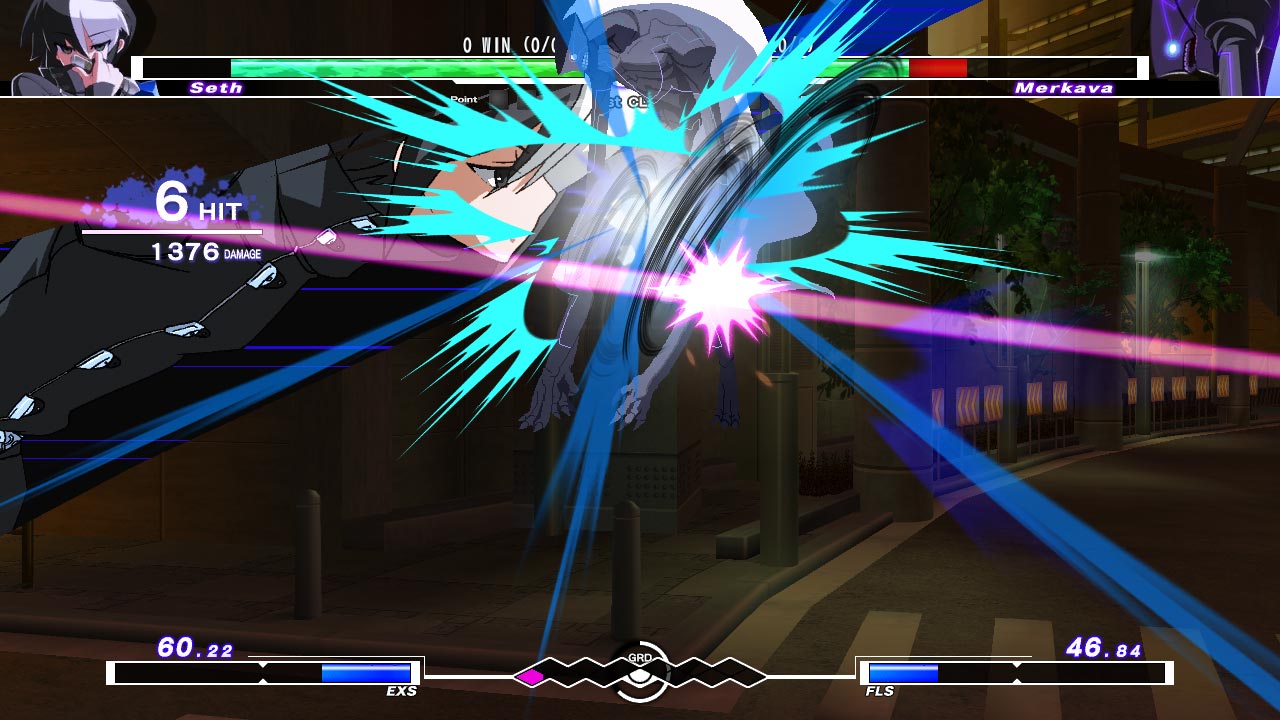
It’s worth noting that UNICLR is actually the third major update to Under Night In-Birth, adding a new character and a bunch of new gameplay changes. I do not have experience with the previous entries, however, so I don’t know how the balance changes affect the overall game. I will say that the game does seem quite balanced so far, so I imagine the changes were pretty well thought out.
Pretty Punching
The Switch port of UNICLR is absolutely gorgeous. Under Night In-Birth was originally on PS3 and Vita, so it is essentially a last-gen game being updated for modern systems. This works to the Switch’s advantage, as there are no crazy textures or effects to downscale for Nintendo’s system, like in Mortal Kombat 11. The game runs smooth as butter in docked and handheld modes, and the handmade sprites look fantastic on the Switch’s screen. The game also boasts some delicious piano-heavy music that sets it apart from other anime fighters.
One of my favorite aspects of the game has been the online play. I’m not sure what they did differently, but the netcode for UNICLR might be the best I’ve seen on Switch. I’ve played dozens of matches, and I can only recall about five matches that had anything I would consider lag. Rarely do the matches stutter or slow down, and the loading times between games is relatively short. Other developers could learn how to make a dependable online infrastructure from UNICLR devs French-Bread.
The only real complaints I can muster for UNICLR are pretty minor. There are some weird translation errors, though I wouldn’t fault them too much, being a small team. The slightly bigger issue is the lack of online lobbies found in other ArcSys published titles, like BlazBlue Cross Tag Battle. Those games have lobbies you can move around in, finding games and chatting with people. The online suite in UNICLR is fine, containing all the expected Ranked and Casual matches, but this a niche anime fighter on a platform not currently supported by its adoring professional scene. The number of players will inevitably drop, so not having a central lobby to easily find matches worries me about the online community’s future. This all remains to be seen, but the lack of lobbies could make it harder in the future to gather the remaining players.
An In-Birth-day Gift of a Game
UNICLR has your standard modes for a fighting game. Versus, Arcade, Survival, Time Attack, and Network play are all included, plus extras like a gallery.
The game also features a hefty story mode. Spanning dozens of chapters, it follows each character in a visual novel style that is only occasionally interrupted for a fight. The story itself is quite involved and complicated, though not as impenetrable as BlazBlue’s story. There exists something called EXS, or Existence, and once a month an area of Japan experiences a “Hollow Night”, where invisible monsters known as Voids feed on EXS, but if a rare person who can see the beasts survives a Void attack and keeps their sanity then they can become an In-Birth, gaining new powers, though they could use too much power to become a Void and there are multiple factions fighting for power and… whew. It is a wild story with a lot of terminology and names that begin to pile up. I didn’t find the story too engaging, but I’ve never judged a fighting game on its story mode. The fact that it’s so lengthy will likely be a selling point to many people.
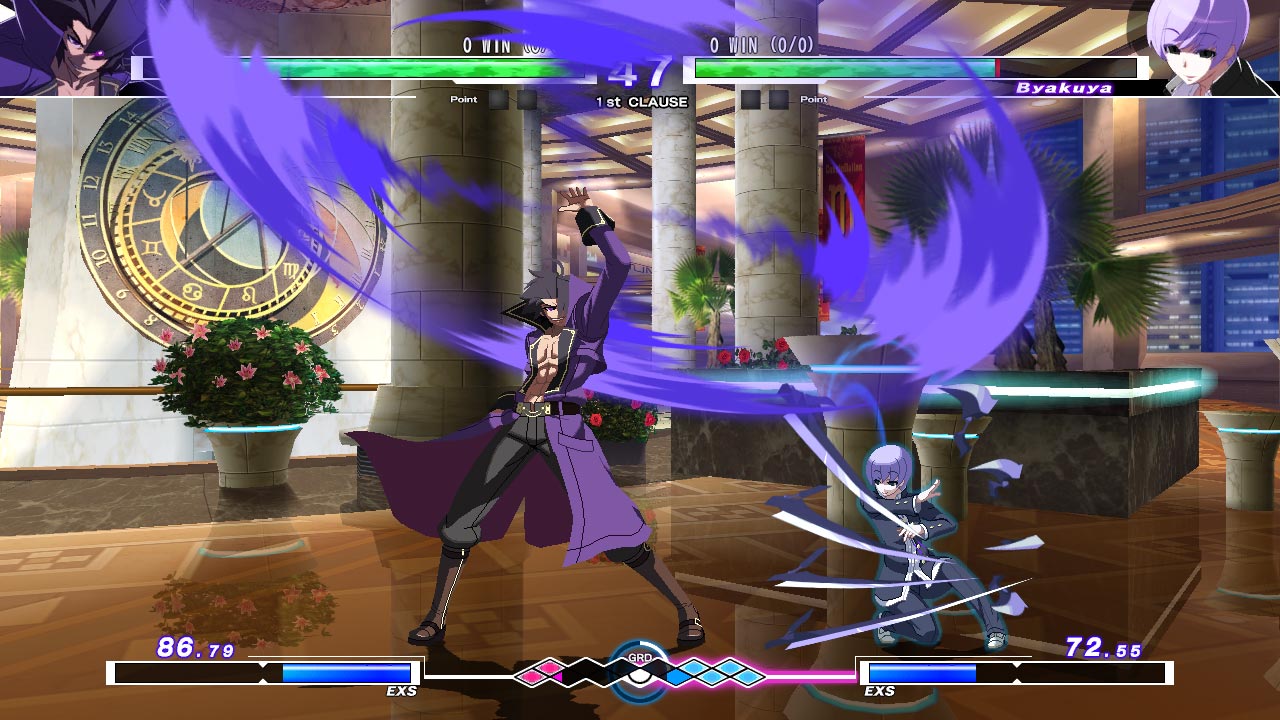
The final mode worth mentioning is one of the most impressive: the tutorial. Many fighting games just show you the basics of the game, plus a few combos for each character. UNICLR goes much further and teaches just about every concept of fighting games. Want to learn about frame advantage? Fuzzy mixups? Hit confirms? There is so much being taught that it can be daunting. Even though it’s so thorough, I would recommend new players start by learning the basics with something like Street Fighter II before tackling this tutorial. It teaches all of these concepts, but doesn’t necessarily break them down into simple terms if you aren’t already familiar with at least a few of them. Still, I love seeing a developer put in so much effort to help new players really understand how fighting games work with lessons that can extend outside their own game.
Under Night? More like… Wonder Fight
UNICLR shocked me with its easy-to-digest combo system, fun cast of characters, kicking tunes, and gorgeous visuals. I found myself constantly saying “one more match” while playing online, even when I was losing. UNICLR’s top tier netcode should be a lesson to all developers on Nintendo Switch, as it never gets in the way of the action. The fast, satisfying gameplay rewards both bold offense and competent defense with the GRD system. Even casual players who like a dense anime plot will find enjoyment in the story mode.
If you consider yourself a fan of fighting games, don’t make the same mistake I did and feel intimidated to try the game. Believe the hype, jump in, and mash out wild combos to your heart’s content.
Leave a Comment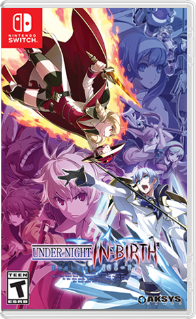
System: Nintendo Switch
Release Date: February 20, 2020
Categories: Fighting
Publisher: Aksys Games
Developer: Arc System Works, FRENCH-BREAD
